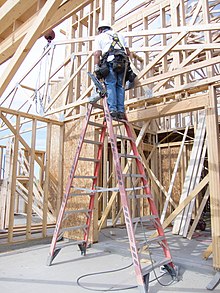Financial advisors
Construction projects can suffer from preventable financial problems.Underbids happen when builders ask for too little money to complete the project. Cash flow problems exist when the present amount of funding cannot cover the current costs for labour and materials, and because they are a matter of having sufficient funds at a specific time, can arise even when the overall total is enough. Fraud is a problem in many fields, but is notoriously prevalent in the construction field.[21] Financial planning for the project is intended to ensure that a solid plan with adequate safeguards and contingency plans are in place before the project is started and is required to ensure that the plan is properly executed over the life of the project.
Mortgage bankers, accountants, and cost engineers are likely participants in creating an overall plan for the financial management of the building construction project. The presence of the mortgage banker is highly likely, even in relatively small projects since the owner's equity in the property is the most obvious source of funding for a building project. Accountants act to study the expected monetary flow over the life of the project and to monitor the payouts throughout the process. Cost engineers and estimators apply expertise to relate the work and materials involved to a proper valuation. Cost overruns with government projects have occurred when the contractor identified change orders or project changes that increased costs, which are not subject to competition from other firms as they have already been eliminated from consideration after the initial bid.[22]
Large projects can involve highly complex financial plans and often start with a conceptual estimate performed by a building estimator. As portions of a project are completed, they may be sold, supplanting one lender or owner for another, while the logistical requirements of having the right trades and materials available for each stage of the building construction project carries forward. In many English-speaking countries, but not the United States, projects typically use quantity surveyors.






